Introduction: In today’s rapidly evolving tech landscape, machine learning (ML) has become a cornerstone of innovation across various industries. From enhancing business operations to driving advancements in healthcare and finance, ML tools are crucial for developing intelligent systems. This article explores the top 10 AI machine learning tools of 2024, detailing their features, benefits, and how they can transform your ML projects. Dive in to find out which tools can best meet your needs and drive your projects to success.
What is an AI Machine Learning Tool?
AI machine learning tools are software platforms and frameworks that facilitate the development, training, and deployment of machine learning models. These tools provide the necessary infrastructure and algorithms to process large datasets, enabling the creation of intelligent applications that can learn from data and improve over time.
Benefits of Using AI Machine Learning Tools
AI machine learning tools offer numerous benefits, including:
- Efficiency: They streamline the process of building and deploying ML models, saving time and resources.
- Accuracy: Advanced algorithms ensure high accuracy in predictions and data analysis.
- Scalability: These tools can handle large datasets and scale as needed.
- Versatility: They support various machine learning techniques and applications, making them suitable for diverse use cases.
Criteria for Choosing the Best AI Machine Learning Tool
When selecting an AI machine learning tool, consider the following criteria:
- Usability: The tool should have an intuitive interface and comprehensive documentation.
- Compatibility: It should integrate well with existing systems and other tools.
- Performance: High performance in terms of speed and accuracy is crucial.
- Cost: The tool should offer good value for money.
- Community support: A strong community can provide support, plugins, and updates.
Top 10 AI Machine Learning Tools
1.TensorFlow
Developed by Google Brain, TensorFlow is one of the most popular open-source frameworks for building and training deep learning models. It supports multiple backends (CPU, GPU, and TPU) and offers tools for both research and large-scale production deployment. TensorFlow’s ecosystem — including TensorBoard, TFLite, and TensorFlow Extended (TFX) — makes it ideal for end-to-end ML pipelines, from model development to serving and monitoring.
Best for:
Developers and enterprises building scalable neural networks and AI production pipelines.
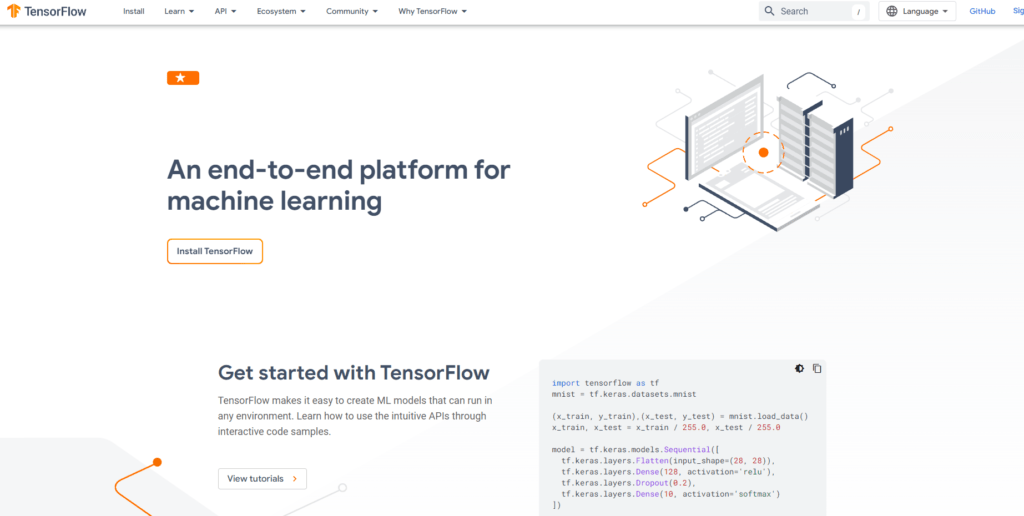
2.PyTorch
Created by Meta (Facebook) AI Research, PyTorch is a flexible deep learning library that uses a dynamic computational graph — allowing developers to modify models on the fly. Its intuitive syntax, robust debugging, and GPU acceleration make it the preferred framework for both academia and enterprise-level AI projects. PyTorch also powers Hugging Face Transformers and OpenAI models, emphasizing its dominance in modern AI research.
Best for:
Researchers and data scientists seeking fast experimentation and deep learning flexibility.
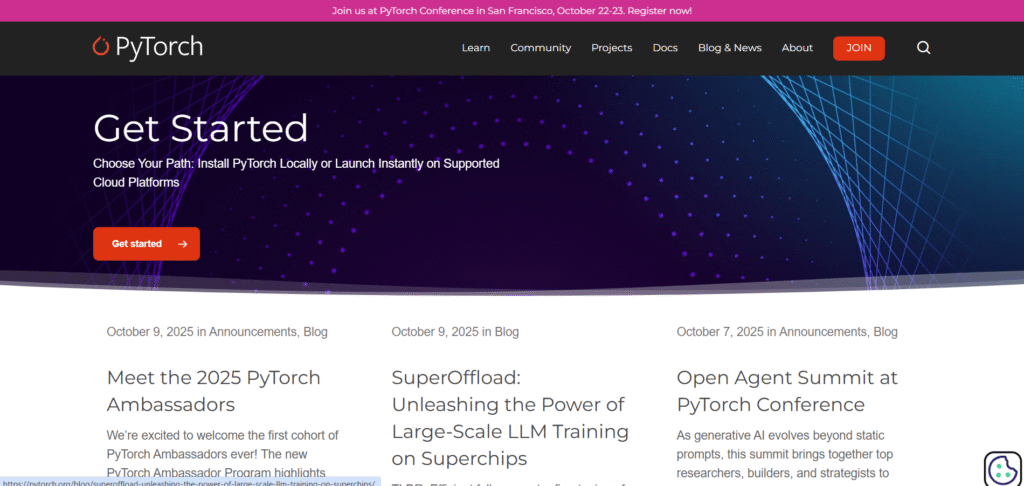
3.CatBoost
Developed by Yandex, CatBoost (short for Categorical Boosting) is an open-source machine learning library for gradient boosting on decision trees. It automatically handles categorical features, reducing preprocessing needs. With minimal parameter tuning, it delivers strong results in tabular data classification and regression problems — often outperforming traditional methods like XGBoost and LightGBM in ease of use and accuracy.
Best for:
Data scientists working on structured/tabular data and business analytics.
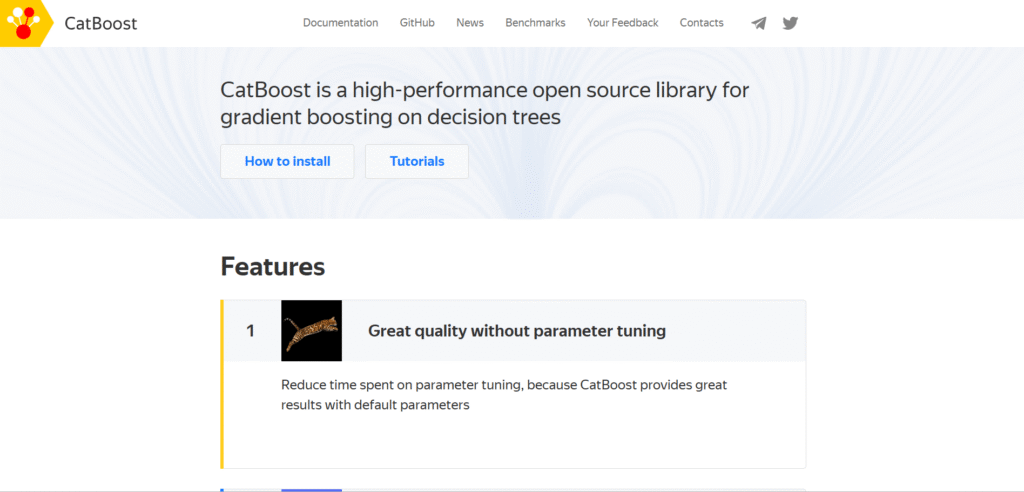
4.Apache SINGA
Apache SINGA is an open-source distributed deep learning platform under the Apache Software Foundation. It is optimized for scalability and can train large AI models efficiently across multiple GPUs, nodes, or clusters. It supports both training and inference workloads and is popular among researchers focusing on scalable AI infrastructures and healthcare applications.
Best for:
Organizations needing distributed deep learning across high-performance computing environments.
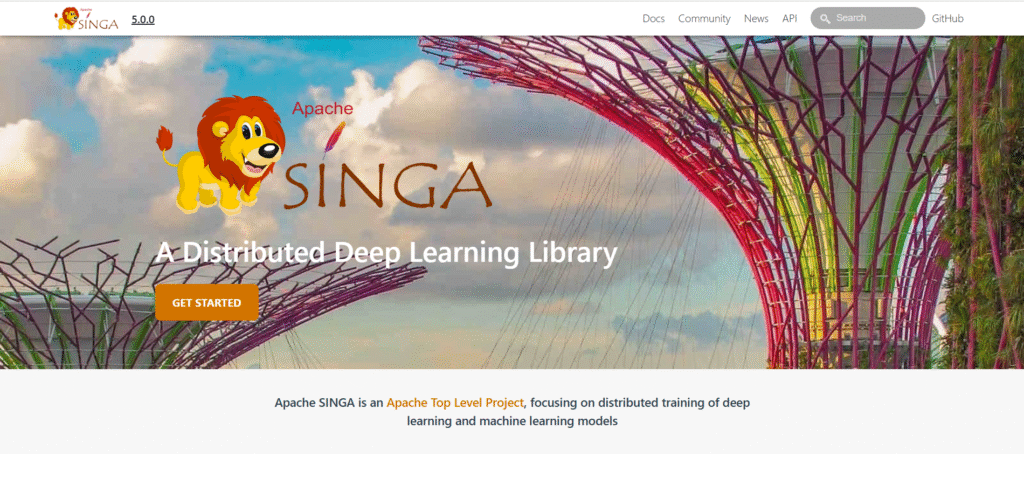
5.Keras
Keras is a high-level neural network API designed for simplicity and rapid prototyping. Initially a standalone project and now tightly integrated with TensorFlow, Keras allows users to build complex deep learning models with minimal code. Its modular architecture supports multiple backends and makes deep learning accessible even to beginners, without compromising power.
Best for:
AI beginners and researchers who need intuitive, fast model prototyping.
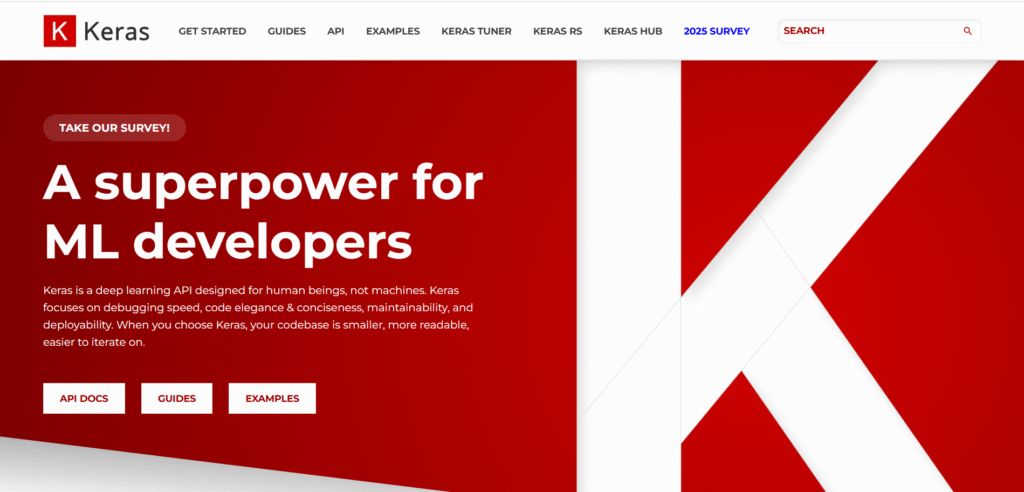
6.Microsoft Azure ML
Azure Machine Learning is a comprehensive cloud platform for building, training, and deploying AI models. It supports drag-and-drop design, AutoML, MLOps integration, and advanced model governance. With built-in pipelines, security, and scalability, it’s trusted by enterprises to operationalize AI at scale while integrating seamlessly with other Azure services.
Best for:
Enterprises and developers deploying secure, cloud-based AI models at scale.
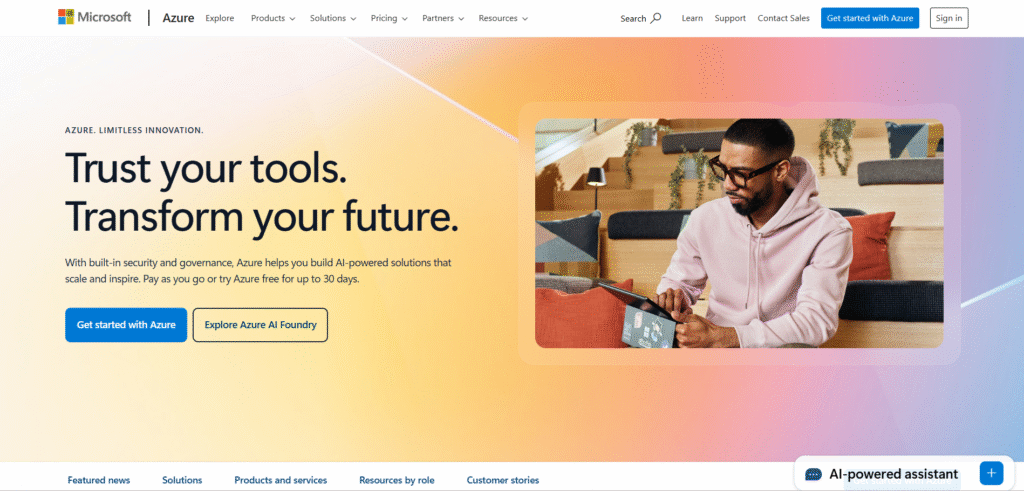
7.Amazon SageMaker
Amazon SageMaker is AWS’s fully managed machine learning service that simplifies the end-to-end ML workflow — from data labeling and model training to deployment and monitoring. It includes built-in algorithms, notebooks, and AutoML features. With SageMaker Studio, developers can quickly experiment and scale production-grade AI systems without heavy infrastructure management.
Best for:
Businesses using AWS for end-to-end AI development and deployment.
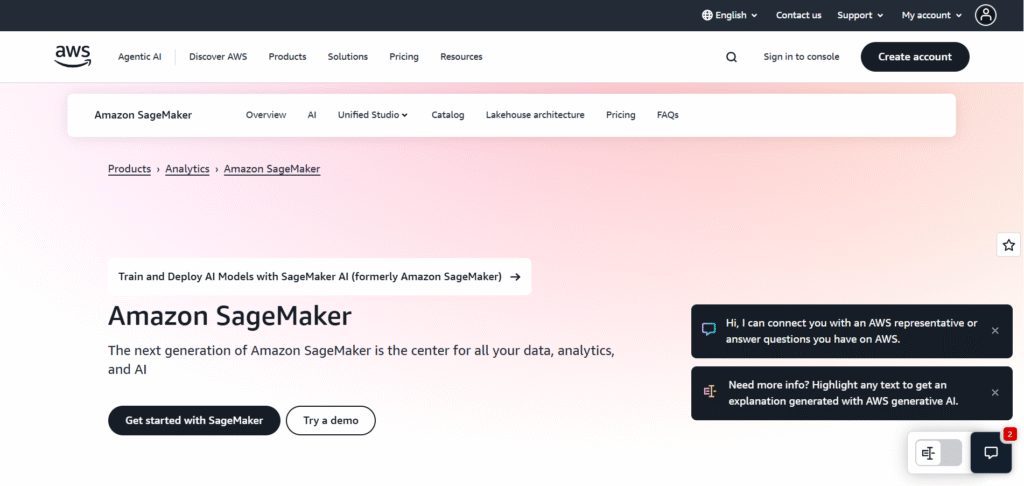
8.IBM Watson
IBM Watson Studio is an enterprise AI platform for data scientists, developers, and analysts to collaborate on building AI and ML models. It provides tools for data cleaning, model training, AutoAI, and deployment — all within a governed environment. Watson’s strengths lie in its enterprise-grade security and integration with hybrid cloud infrastructures.
Best for:
Corporates and research institutions focused on collaborative, secure AI development.
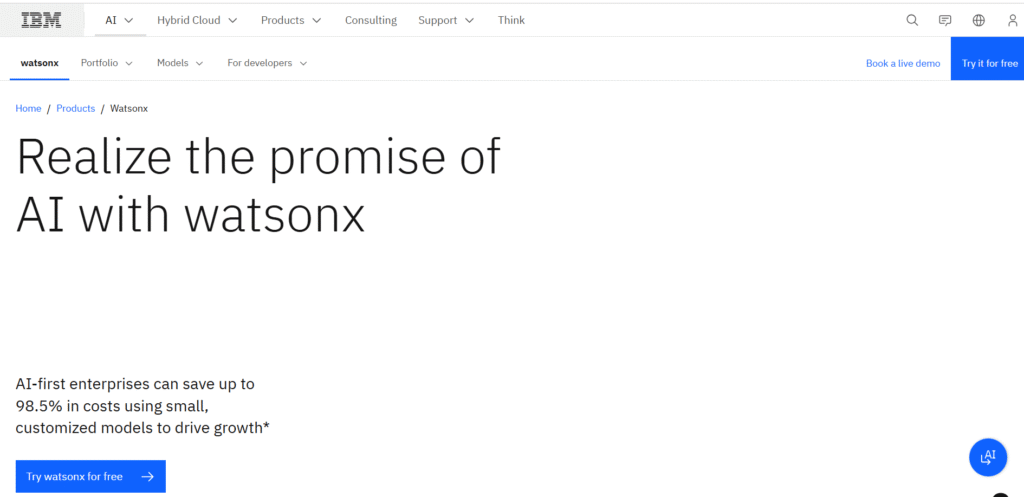
9.H2O.ai
H2O.ai offers open-source and enterprise tools (like H2O-3 and Driverless AI) that automate machine learning workflows. Its AutoML capabilities enable non-experts to train high-performing models for classification, regression, and time-series tasks. H2O.ai’s interpretable AI models are widely used in finance, insurance, and healthcare sectors where transparency is critical.
Best for:
Businesses seeking automated and explainable AI/ML solutions.

10.MLflow
Developed by Databricks, MLflow is an open-source platform designed to manage the end-to-end machine learning lifecycle. It tracks experiments, manages model versions, and simplifies deployment to multiple environments. MLflow integrates seamlessly with popular frameworks like TensorFlow, PyTorch, and Scikit-learn — making it a cornerstone of modern MLOps workflows.
Best for:
ML engineers and DevOps teams managing AI model tracking, versioning, and deployment pipelines.
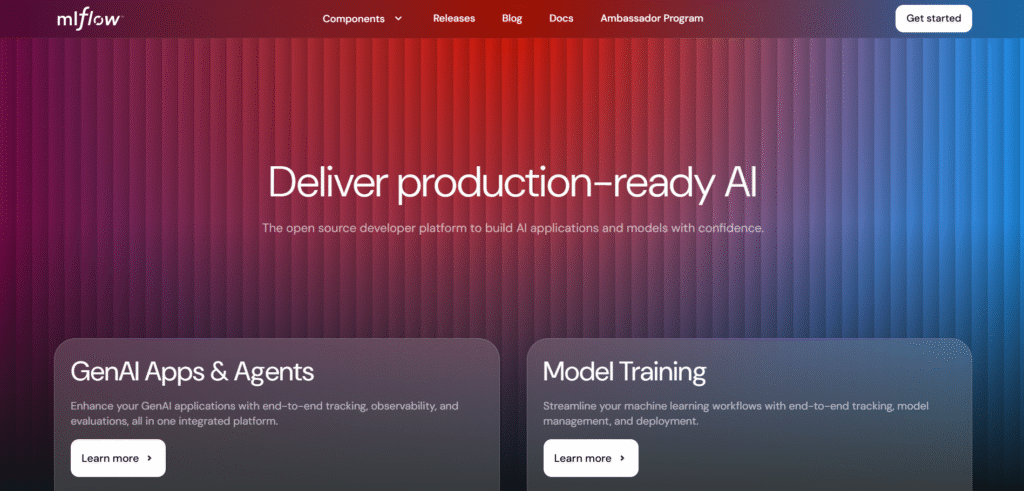
Benefits of Using AI Machine Learning Tools for Businesses
Businesses can significantly benefit from AI machine learning tools through:
- Efficiency: Automating tasks and processes.
- Innovation: Developing new products and services.
- Competitiveness: Gaining insights and making data-driven decisions.
- Insights: Extracting valuable information from large datasets.
Challenges and Limitations
While AI machine learning tools offer many benefits, they also have some limitations:
- Data quality: Poor quality data can lead to inaccurate models.
- Complexity: Some tools require significant expertise.
- Cost: High-quality tools and infrastructure can be expensive.
- Integration: Challenges in integrating with existing systems.
Future of AI Machine Learning Tools
The future of AI machine learning tools looks promising with advancements like:
- Innovations: Improved algorithms and tools.
- Trends: Increased use of AutoML and edge computing.
- Integration: Better integration with IoT and other emerging technologies.
How to Get Started with AI Machine Learning Tools
To get started with AI machine learning tools:
- Steps to implement: Choose a tool, gather data, train models, deploy solutions.
- Tips for best results: Ensure high-quality data, start with small projects, iterate and improve.
- Common pitfalls to avoid: Avoid overfitting, ensure data privacy and security.
Comparing AI Machine Learning Tools
Here’s a comparison table to help you choose the right tool:
| Tool | Core Focus | Ideal Users | Key Feature |
|---|---|---|---|
| TensorFlow | Deep learning framework | Developers, enterprises | Scalable across CPU, GPU, TPU |
| PyTorch | Research & prototyping | Data scientists | Dynamic computation graph |
| CatBoost | Gradient boosting | Analysts | Auto categorical handling |
| Apache SINGA | Distributed deep learning | Research labs | Multi-node scalability |
| Keras | Model prototyping | Students, developers | User-friendly API |
| Azure ML | Cloud ML lifecycle | Enterprises | AutoML + MLOps |
| SageMaker | End-to-end ML workflow | AWS users | Fully managed ML stack |
| H2O.ai | AutoML platform | Enterprises | Interpretable models |
| IBM Watson Studio | Collaborative AI suite | Corporates | Secure, governed environment |
| MLflow | MLOps & model management | Engineers | Experiment tracking + versioning |
Case Studies: Success Stories
Company X: A retail company used Microsoft Azure ML to optimize its supply chain, resulting in a 20% reduction in operational costs.
Individual Y: A data scientist leveraged TensorFlow to develop a predictive maintenance system, improving equipment uptime by 15%.
Frequently Asked Questions
How do AI machine learning tools work? AI machine learning tools use algorithms to process data, identify patterns, and make predictions based on those patterns.
Can I use these tools without coding knowledge? Some tools like RapidMiner and Microsoft Azure ML offer no-code or low-code interfaces, making them accessible to non-programmers.
What are the costs associated with AI machine learning tools? Costs vary; many tools offer free versions, while others have pay-as-you-go or subscription-based pricing models.
How do I choose the best AI machine learning tool for my project? Consider factors like usability, compatibility with your data and systems, performance, cost, and available support.
Can these tools handle big data? Yes, tools like Apache Spark MLlib and TensorFlow are designed to handle large-scale data processing.
What are the security concerns with using AI machine learning tools? Ensure that the tools comply with data privacy regulations and implement proper security measures to protect sensitive data.
Conclusion
AI machine learning tools have transformed how we approach data analysis and predictive modeling. Whether you’re a seasoned data scientist or a business professional, these tools can help you leverage the power of machine learning to drive innovation and efficiency. Explore the top 10 AI machine learning tools of 2024, evaluate their features, and choose the one that best fits your needs. Embrace the future of AI and machine learning with these cutting-edge tools!



